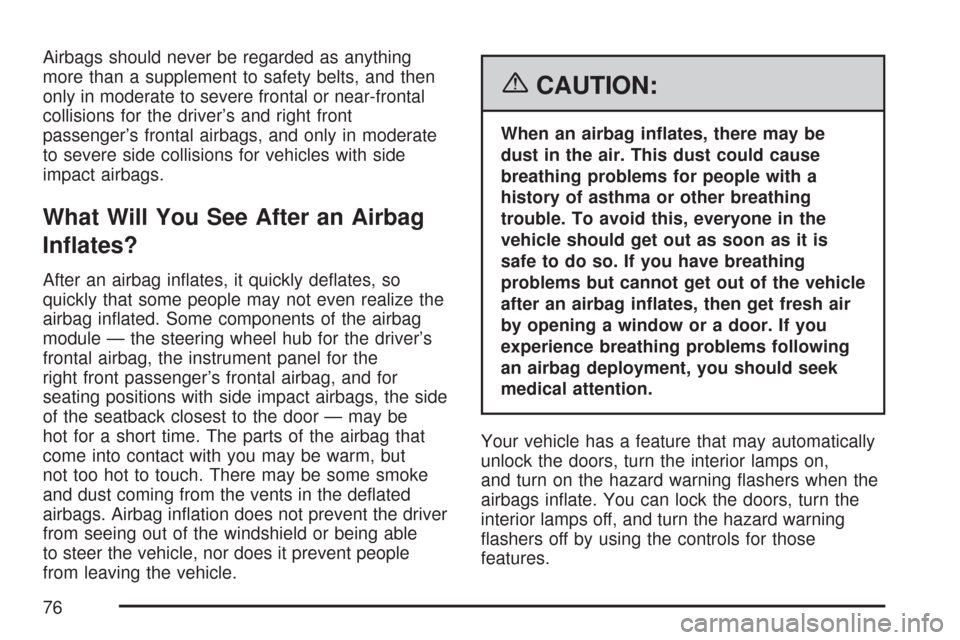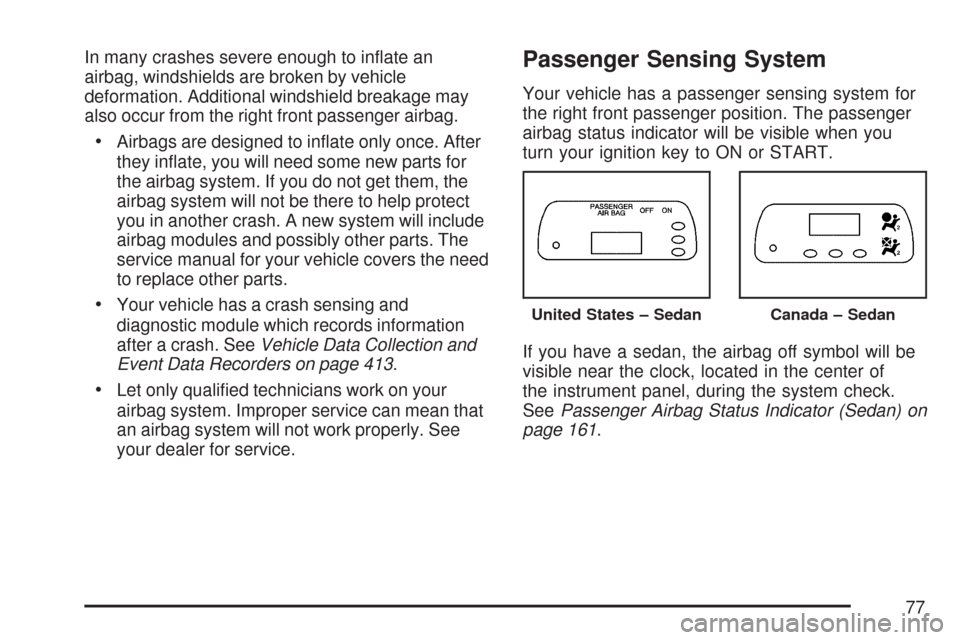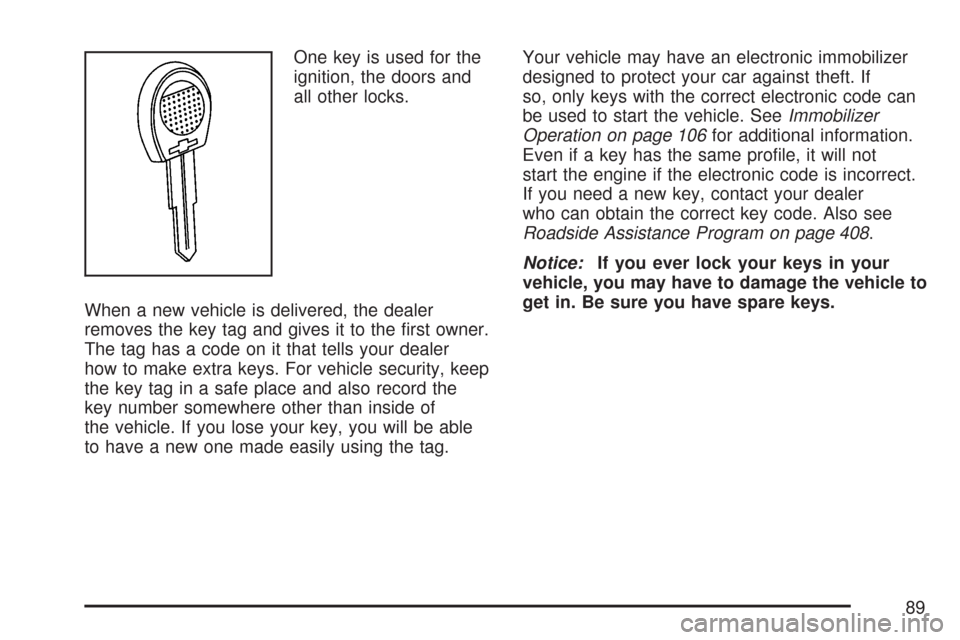Page 62 of 436
3. Buckle the belt. Be sure the latch plate clicks
when you put it into the buckle. This means
you are using the correct buckle. Also,
make sure the release button is positioned so
you would be able to unbuckle the safety
belt quickly if you ever had to.4. Pull the rest of the shoulder belt all the way
out of the retractor to set the lock.
62
Page 67 of 436
5. Pull the rest of the shoulder belt all the way
out of the retractor to set the lock.6. To tighten the belt, push down on the child
restraint, pull the shoulder portion of the belt
to tighten the lap portion of the belt and
feed the shoulder belt back into the retractor.
If you are using a forward-facing child
restraint, you may find it helpful to use your
knee to push down on the child restraint
as you tighten the belt. You should not be able
to pull more of the belt from the retractor
once the lock has been set.
7. Push and pull the child restraint in different
directions to be sure it is secure.
67
Page 68 of 436

8. If the airbag or airbags are off, the off symbol
on the instrument panel near the clock will be
lit and stay lit when the key is turned to
ON or START.
If a child restraint has been installed and the off
symbol is not lit, turn the vehicle off. Remove
the child restraint from the vehicle and reinstall the
child restraint.
If after reinstalling the child restraint and restarting
the vehicle, the off symbol is still not lit, check
to make sure that the vehicle’s seatback is
not pressing the child restraint into the seat
cushion. If this happens, slightly recline the
vehicle’s seatback and adjust the seat cushion if
possible. Also make sure the child restraint is
not trapped under the vehicle head restraint. If this
happens, adjust the head restraint.
A thick layer of additional material such as a
blanket, or aftermarket equipment such as seat
covers heaters or massagers, located between the
seat cushion and the child restraint or small
occupant, can affect how the passenger sensing
system operates. Remove any additional material
from the seat cushion before reinstalling/securing
the child restraint or small occupant.If the off symbol is still not lit, secure the child in
the child restraint in a rear seat position in
the vehicle and check with your dealer.
To remove the child restraint, just unbuckle the
vehicle’s safety belt and let it go back all the way.
The safety belt will move freely again and be
ready to work for an adult or larger child
passenger.
Airbag System
Your vehicle has a frontal airbag for the driver and
a frontal airbag for the right front passenger.
Your vehicle may also have side impact airbags.
Side impact airbags are available for the driver and
right front passenger.
If your vehicle has a side impact airbag for the
driver and/or the right front passenger, the word
AIRBAG will appear on the airbag covering on the
side of the seatback closest to the door.
Airbags are designed to supplement the protection
provided by safety belts. Even though today’s
airbags are also designed to help reduce the risk
of injury from the force of an inflating bag, all
airbags must inflate very quickly to do their job.
68
Page 73 of 436
If your vehicle has a side impact airbag for the
right front passenger, it is in the side of the
passenger’s seatback closest to the door.
{CAUTION:
If something is between an occupant and
an airbag, the airbag might not in�ate
properly or it might force the object into
that person causing severe injury or even
death. The path of an in�ating airbag must
be kept clear. Do not put anything
between an occupant and an airbag, and
do not attach or put anything on the
steering wheel hub or on or near any
other airbag covering.
Do not use seat accessories that block
the in�ation path of a seat-mounted side
impact airbag.
73
Page 76 of 436

Airbags should never be regarded as anything
more than a supplement to safety belts, and then
only in moderate to severe frontal or near-frontal
collisions for the driver’s and right front
passenger’s frontal airbags, and only in moderate
to severe side collisions for vehicles with side
impact airbags.
What Will You See After an Airbag
In�ates?
After an airbag inflates, it quickly deflates, so
quickly that some people may not even realize the
airbag inflated. Some components of the airbag
module — the steering wheel hub for the driver’s
frontal airbag, the instrument panel for the
right front passenger’s frontal airbag, and for
seating positions with side impact airbags, the side
of the seatback closest to the door — may be
hot for a short time. The parts of the airbag that
come into contact with you may be warm, but
not too hot to touch. There may be some smoke
and dust coming from the vents in the deflated
airbags. Airbag inflation does not prevent the driver
from seeing out of the windshield or being able
to steer the vehicle, nor does it prevent people
from leaving the vehicle.
{CAUTION:
When an airbag in�ates, there may be
dust in the air. This dust could cause
breathing problems for people with a
history of asthma or other breathing
trouble. To avoid this, everyone in the
vehicle should get out as soon as it is
safe to do so. If you have breathing
problems but cannot get out of the vehicle
after an airbag in�ates, then get fresh air
by opening a window or a door. If you
experience breathing problems following
an airbag deployment, you should seek
medical attention.
Your vehicle has a feature that may automatically
unlock the doors, turn the interior lamps on,
and turn on the hazard warning flashers when the
airbags inflate. You can lock the doors, turn the
interior lamps off, and turn the hazard warning
flashers off by using the controls for those
features.
76
Page 77 of 436

In many crashes severe enough to inflate an
airbag, windshields are broken by vehicle
deformation. Additional windshield breakage may
also occur from the right front passenger airbag.
•Airbags are designed to inflate only once. After
they inflate, you will need some new parts for
the airbag system. If you do not get them, the
airbag system will not be there to help protect
you in another crash. A new system will include
airbag modules and possibly other parts. The
service manual for your vehicle covers the need
to replace other parts.
•Your vehicle has a crash sensing and
diagnostic module which records information
after a crash. SeeVehicle Data Collection and
Event Data Recorders on page 413.
•Let only qualified technicians work on your
airbag system. Improper service can mean that
an airbag system will not work properly. See
your dealer for service.
Passenger Sensing System
Your vehicle has a passenger sensing system for
the right front passenger position. The passenger
airbag status indicator will be visible when you
turn your ignition key to ON or START.
If you have a sedan, the airbag off symbol will be
visible near the clock, located in the center of
the instrument panel, during the system check.
SeePassenger Airbag Status Indicator (Sedan) on
page 161.
United States – SedanCanada – Sedan
77
Page 87 of 436

Keys.............................................................. 88
Remote Keyless Entry (RKE) System.......... 90
Remote Keyless Entry (RKE) System
Operation................................................. 91
Doors and Locks.......................................... 94
Door Locks................................................. 94
Central Door Unlocking System................... 95
Door Ajar Reminder.................................... 95
Rear Door Security Locks........................... 96
Lockout Protection....................................... 97
Trunk.......................................................... 97
Liftgate (Hatchback)................................... 100
Windows...................................................... 101
Manual Windows....................................... 101
Power Windows........................................ 102
Sun Visors................................................ 103
Theft-Deterrent Systems............................. 103
Theft-Deterrent System.............................. 103
Immobilizer................................................ 106
Immobilizer Operation................................ 106
Starting and Operating Your Vehicle......... 107
New Vehicle Break-In................................ 107
Ignition Positions....................................... 108Starting the Engine.................................... 109
Engine Coolant Heater.............................. 110
Automatic Transaxle Operation.................. 112
Manual Transaxle Operation...................... 116
Parking Brake........................................... 117
Shifting Into Park (P)
(Automatic Transaxle)............................ 118
Shifting Out of Park (P)............................. 120
Parking Your Vehicle (Manual Transaxle).... 121
Parking Over Things That Burn................. 121
Engine Exhaust......................................... 122
Running the Engine While Parked............. 123
Mirrors......................................................... 124
Manual Rearview Mirror............................. 124
Outside Manual Mirrors............................. 124
Outside Power Mirror................................ 125
Outside Convex Mirror............................... 126
Outside Heated Mirrors............................. 126
Storage Areas............................................. 126
Glove Box................................................. 127
Cupholder(s).............................................. 127
Sunglasses Storage Compartment............. 127
Sunroof....................................................... 128
Section 2 Features and Controls
87
Page 89 of 436

One key is used for the
ignition, the doors and
all other locks.
When a new vehicle is delivered, the dealer
removes the key tag and gives it to the first owner.
The tag has a code on it that tells your dealer
how to make extra keys. For vehicle security, keep
the key tag in a safe place and also record the
key number somewhere other than inside of
the vehicle. If you lose your key, you will be able
to have a new one made easily using the tag.Your vehicle may have an electronic immobilizer
designed to protect your car against theft. If
so, only keys with the correct electronic code can
be used to start the vehicle. SeeImmobilizer
Operation on page 106for additional information.
Even if a key has the same profile, it will not
start the engine if the electronic code is incorrect.
If you need a new key, contact your dealer
who can obtain the correct key code. Also see
Roadside Assistance Program on page 408.
Notice:If you ever lock your keys in your
vehicle, you may have to damage the vehicle to
get in. Be sure you have spare keys.
89